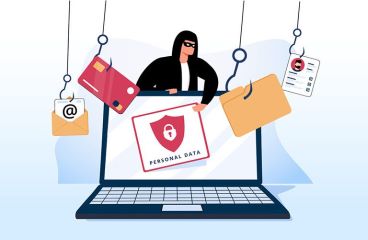Effective Ways to Detect and Prevent Phishing Scams in Business

Cybersecurity threats are on the rise, with phishing being a persistent and dangerous one. Phishing attacks involve attackers pretending to be trustworthy sources to trick people into sharing sensitive information. Let’s explore the significance of phishing in the workplace, common signs of a phishing email, and effective prevention strategies.
What is Phishing Scams?
Cybercriminals employ phishing, a malicious tactic, to trick individuals into revealing sensitive information such as login credentials and financial details. The most common method is through deceptive emails, but phishing attacks can also occur through malicious websites, text messages, and even phone calls.
Why is the Workplace a Prime Target?
Organizations, regardless of their size, possess a treasure trove of valuable data, including financial records, employee personal details, and proprietary information. The potential rewards within these organizations entice cybercriminals. Larger groups increase the likelihood of phishing attack victims, making workplaces preferred hunting grounds for phishers.
Recognizing Phishing Emails
It is crucial for employees to be able to identify phishing emails to prevent falling victim to these attacks. Here are some common signs to watch out for:
- Urgent or Threatening Language: Phishing emails often create a sense of urgency, pressuring the recipient to take immediate action or face consequences.
- Mismatched URLs: Hovering over a link in an email can reveal the actual URL. If it does not match the supposed sender or appears suspicious, it should raise a red flag.
- Request for Personal Information: Legitimate businesses rarely ask for personal details or credentials via email. If such a request is made, it likely represents a phishing attempt.
- Poor Grammar and Spelling: While not always the case, many phishing emails contain noticeable mistakes in grammar and spelling.
- Unusual Sender: If an unexpected email arrives from a senior executive or an unfamiliar entity demanding specific actions, it should be treated with caution.
Preventing Phishing Scams in the Workplace
To protect against phishing attacks, organizations must take proactive measures to educate employees and implement robust security practices. Here are some effective prevention strategies:
- Educate Employees: Regular training sessions can raise awareness about phishing techniques and help employees recognize phishing attempts.
- Use Advanced Email Filtering: Implementing advanced email filtering systems can help identify and block many phishing attempts before they reach employees’ inboxes.
- Two-Factor Authentication (2FA): Enabling 2FA provides an additional layer of security, even if an employee’s credentials are compromised.
- Regular Backups: In the event of a successful phishing attack, regular backups ensure that data can be restored without paying a ransom.
- Keep Software Updated: Ensuring that all systems have the latest security patches can help protect against vulnerabilities exploited by phishing attacks.
Phishing scams pose a significant threat to organizations in today’s digital workspace. Increased awareness, vigilance, and proactive measures significantly reduce the risk of falling victim to phishing attacks. Protecting data is not only essential for the success of a business but also crucial for maintaining trust and reputation. Organizations can create a safer online environment for employees by prioritizing cybersecurity and staying informed about the latest phishing techniques.
Remember, cybersecurity is an ongoing effort that requires constant attention and adaptation. By staying proactive and investing in the right security measures, organizations can safeguard their data and ensure a secure future. Stay safe and prioritize cybersecurity at all times.


 Dario Rampersad
Dario Rampersad Oct 11, 2023
Oct 11, 2023 
)
)
)





